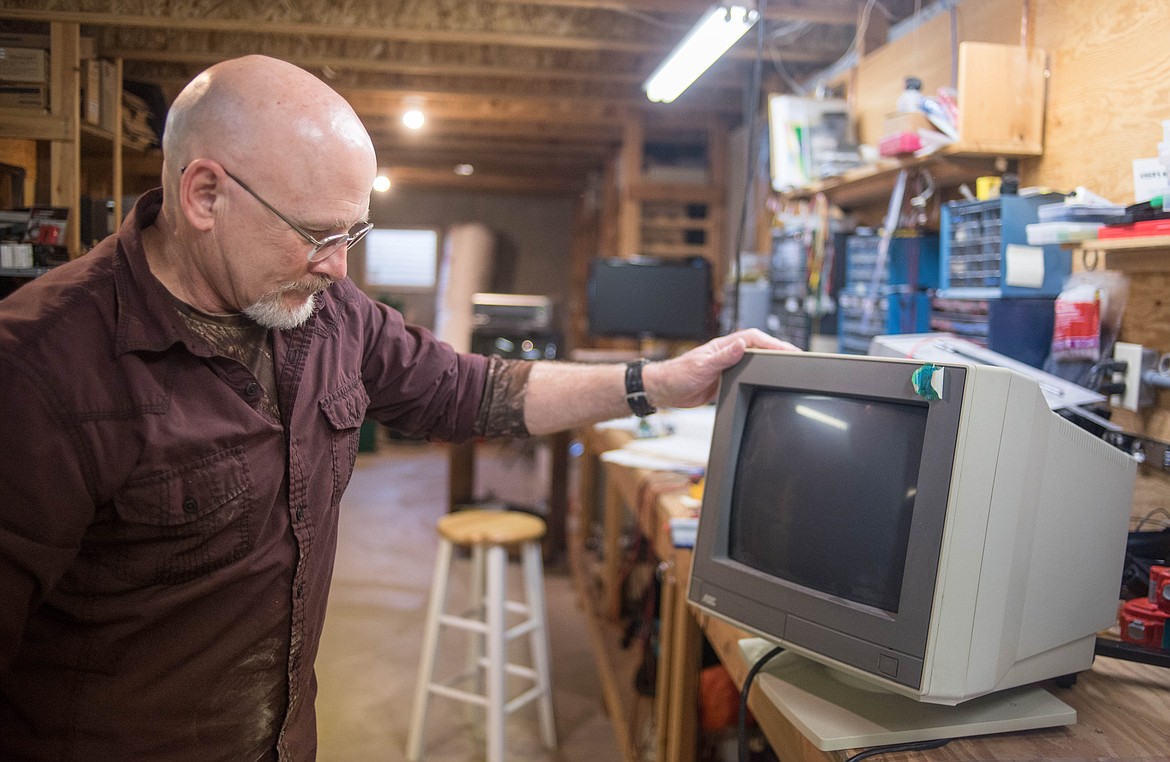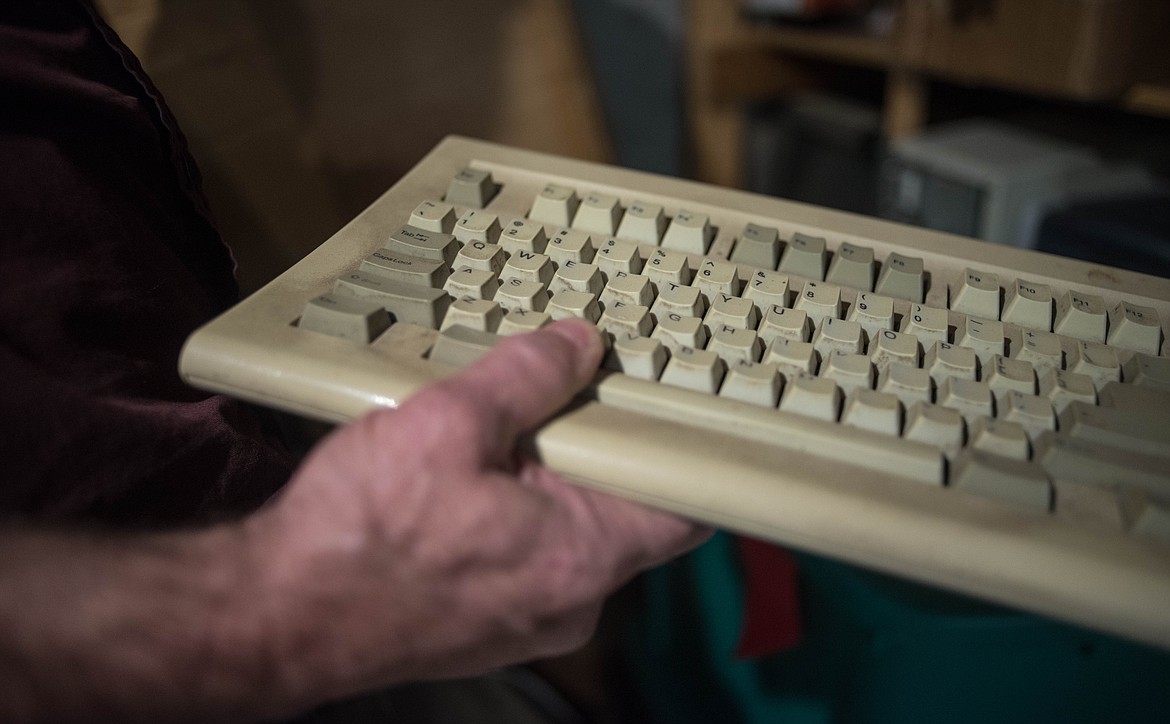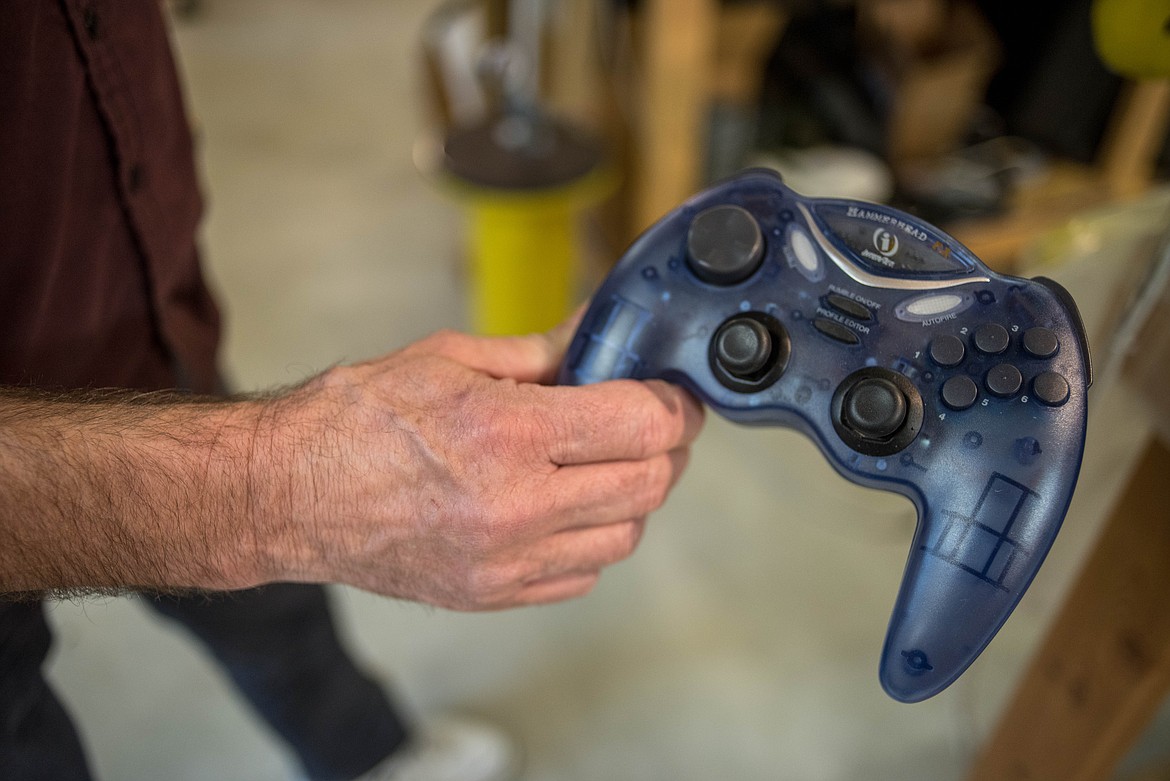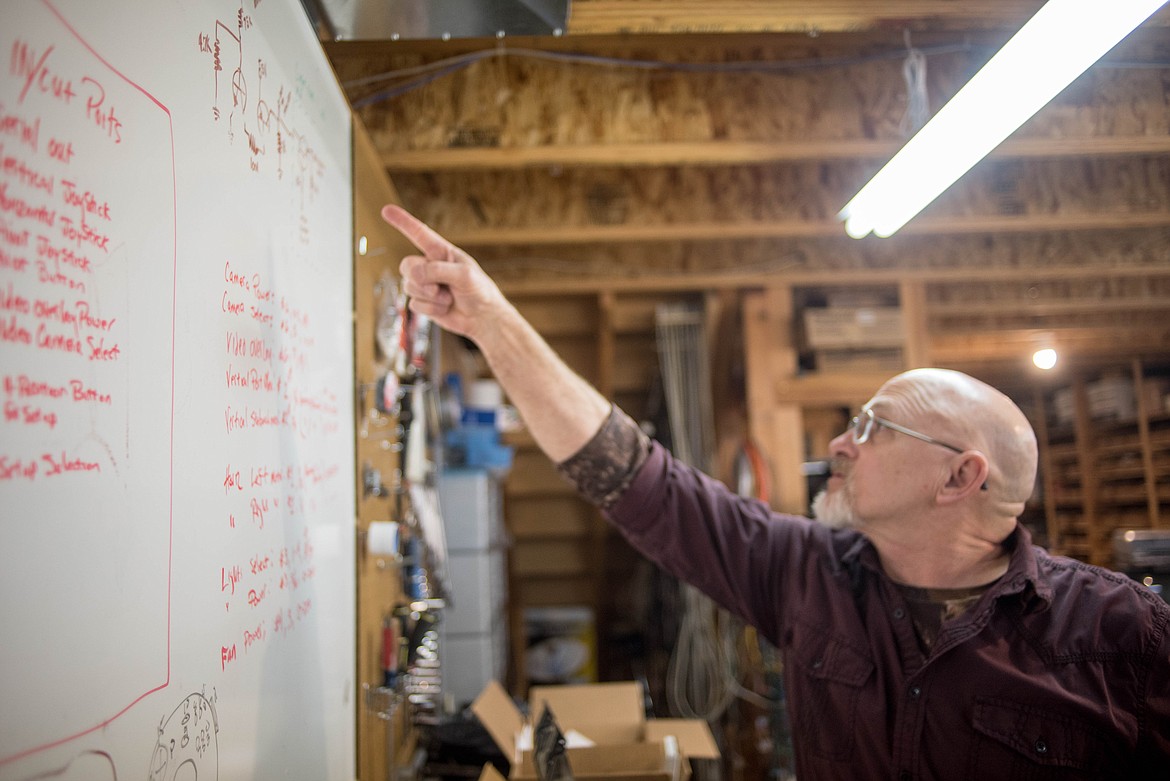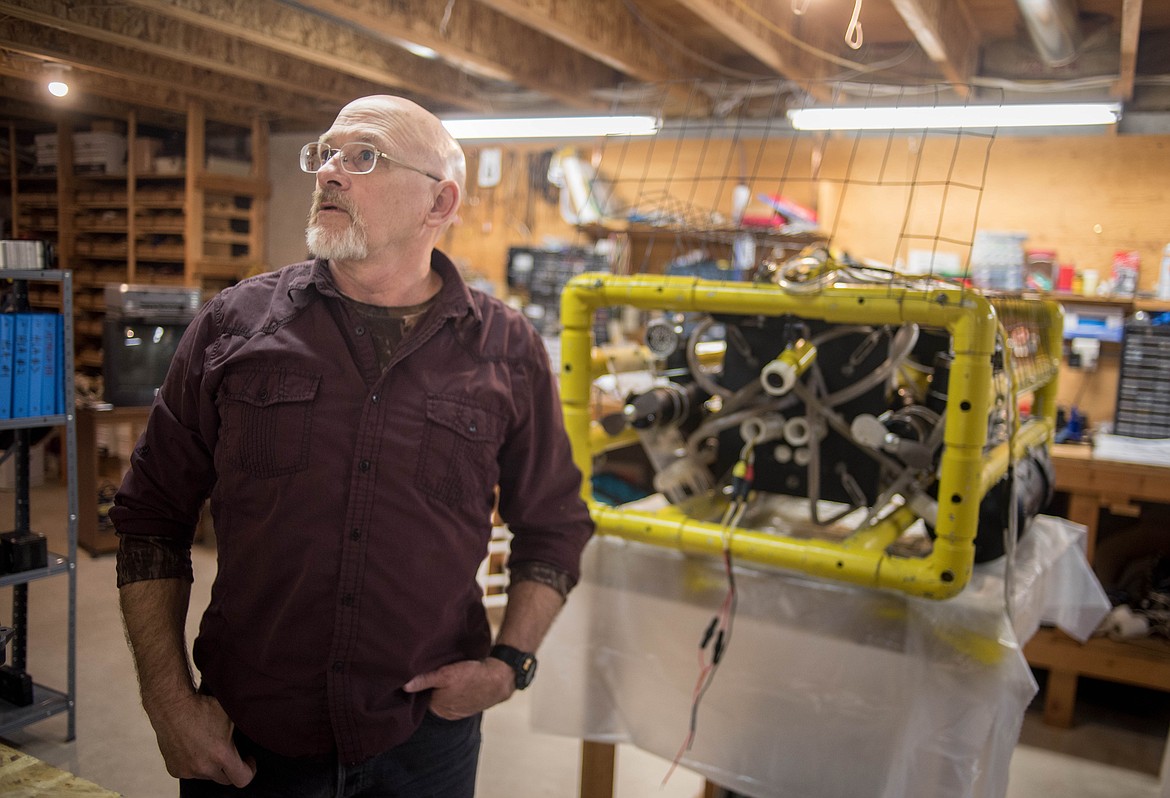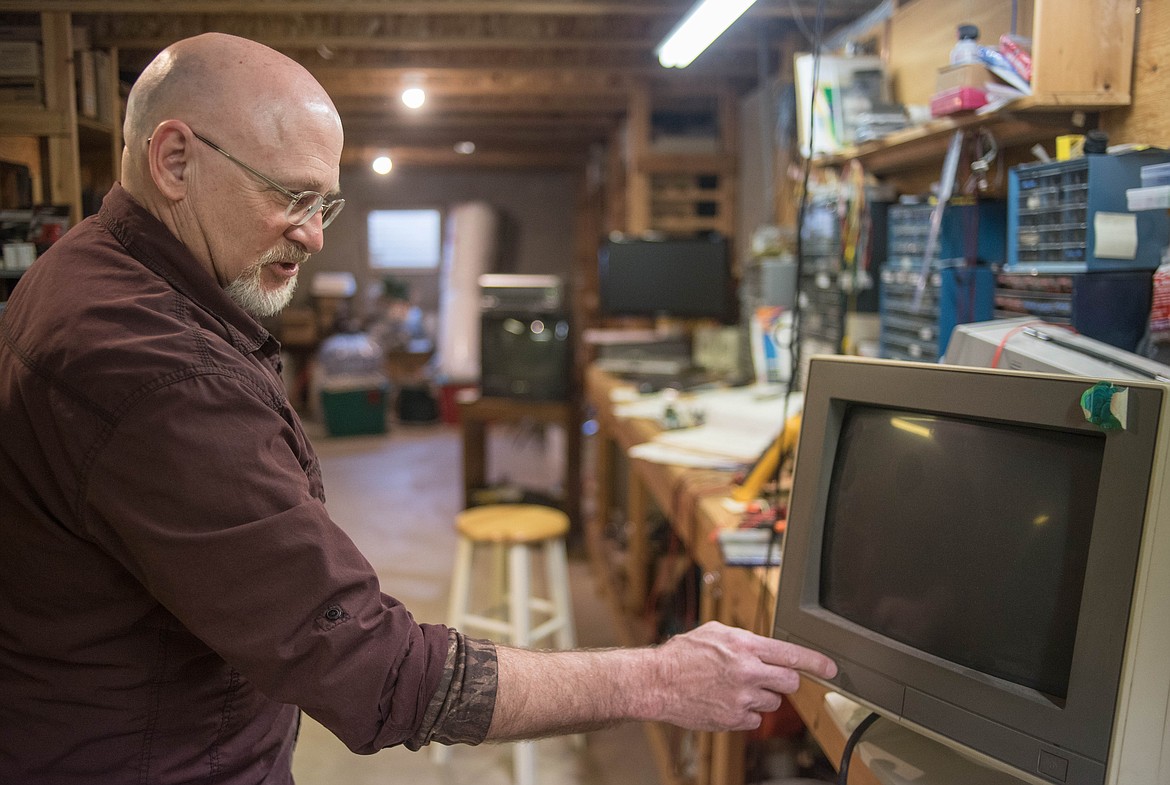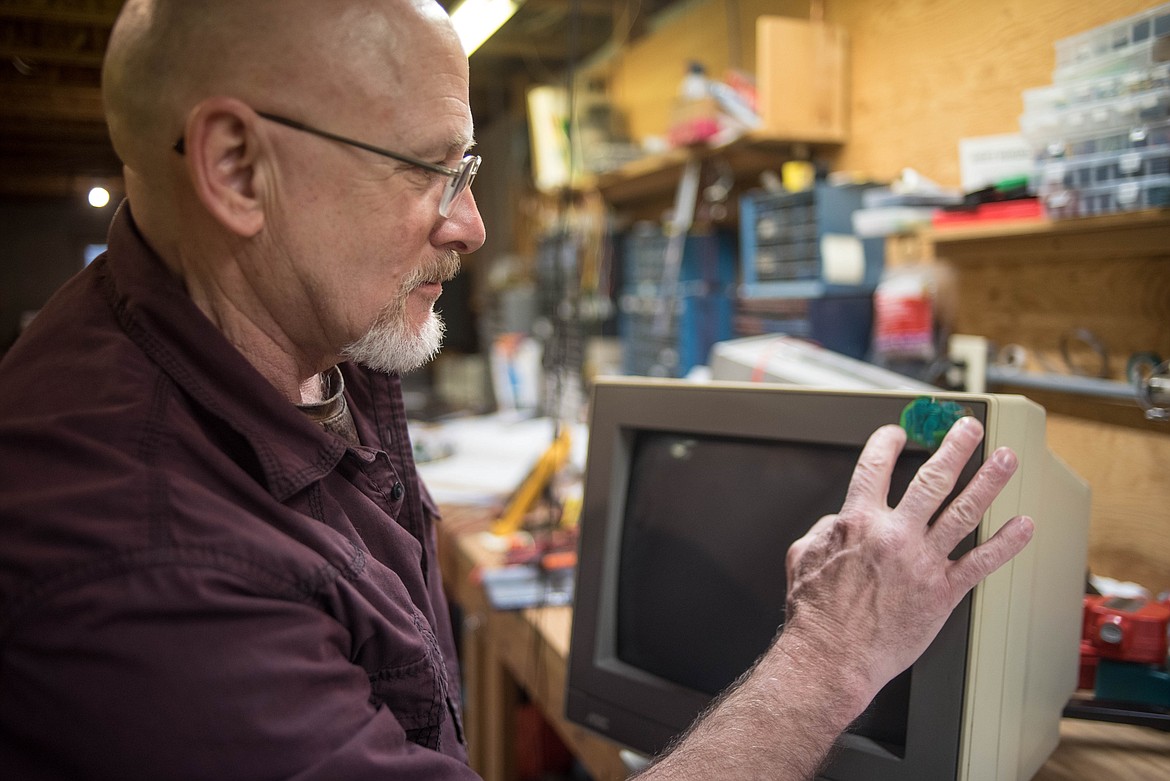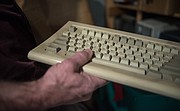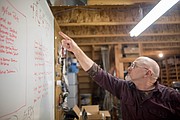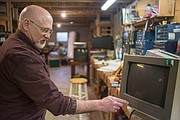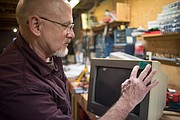Local software entrepreneur marks 25 years
In the basement of Bob Hosea’s log cabin just outside of Libby, lie a colorful assortment of electrical supplies, circuit boards, notes scattered around and, of course, a remote operated submarine.
Lincoln County might seem like an unlikely place for a creative tech entrepreneur, but for Hosea, a Troy native, it has always been home.
His company, CMH Software, has been in business in Libby for just over 25 years, its anniversary was Jan. 1.
Hosea started getting serious with his electrical tinkering after he lost his job in 1993 at the local mine.
He taught himself how to program and wanted to create a software application for the electrical needs of miners.
His first office space was in an insulated quonset hut with a heater. He used an IBM XT 286 to program and a monochrome monitor. The computer was complete with a floppy disk drive and up to 10mb of hard drive space.
“That was the good ol’ days,” he said.
Part of Hosea’s inspirations came from a coworker of his in the mine.
Kevin Christensen, co-owner of CMH Software with Hosea, decided to quit before the mine closed down. Being an electrical foreman, he often had to train workers how to do electrical engineering.
Christensen and Hosea thought up a solution. Rather than draw out electrical maps for the trainees, they could create a software program to lay out testable electrical diagrams.
Christensen communicates with people and takes the calls while Hosea does the technical computer work.
“He’s the engineering, put-it-together type,” said Christensen.
There are an assortment of different projects Hosea has worked on over the years.
When Hosea is not programming engineering software, he is often tinkering around in the basement workshop.
“It’s just kind of a hobby that turned into a business,” he said
He initially created the remote operated submarine that he keeps in his basement about 15 years ago to find holes in the Libby water tank. Hosea attached cameras to it and used a game controller with a screen to navigate.
At that point in time, CMH Software was only 10 years old, which is longer than Hosea thought the company would have been in business.
Hosea also created a software application to log different geocache locations, a metal detecting online game and, last year, worked on creating an application for game wardens to help them keep track of animals.
Wardens could use the app to log animals and animal carcasses when they would go out in the field. Hosea also made a battery operated motion sensing camera system used to look at wildlife.
Unfortunately, the animal tracking application fell through because the state did not want it, but Hosea still keeps busy with other projects.
Sandy Hosea saw her husband’s projects and company evolve from the start. Even when the family went camping he would bring his laptop out with him to work on software, she said.
He was always excited about what he was working on, she said. Even when he was sitting outside in his quonset hut programming, his work ethic is too good.
According to Hosea, a normal work week in the hut consisted of 12 hour days, 7 days a week of nonstop coding.
“Just the ability to come up with the programs he does, blows my mind,” she said
Sometimes Hosea’s work can be a little off the wall, she said.
Hosea once even made an elaborate electronic squirrel trap to stop a one-eyed squirrel from stealing bird food, she said. “Most people would go out and shoot the squirrel.”
When he dreams something up, he always follows through with it, she said.
On the side, Hosea also makes tutorial videos showing how to take apart and repair DSLR cameras. His work desk has a deconstructed camera sitting on it, illuminated by bright lights.
“There’s just so many things you could do nowadays,” he said.
Hosea has no shortage of electronic projects, his basement is a mix of new ideas and aging technology stacked on top of itself, shoved everywhere.
“I like it when I get to come down here, this is the fun area,” he said.
Before leaving the mine he and Christensen were coworkers “just dinken’ around” and sharing ideas, said Hosea. Now, one of his most successful programs, The Constructor, is used worldwide by schools, businesses and even NASA.
But most people in Libby do not know their company even exists, he said.
Looking back over 25 years, Hosea is very happy his business thrived as well as it did. Just 10 years without being unemployed would have been pretty amazing, he said.
“I’m kind of dumbfounded,” he said.
Hosea, who has tried many different projects over the years, encourages others to do the same.


